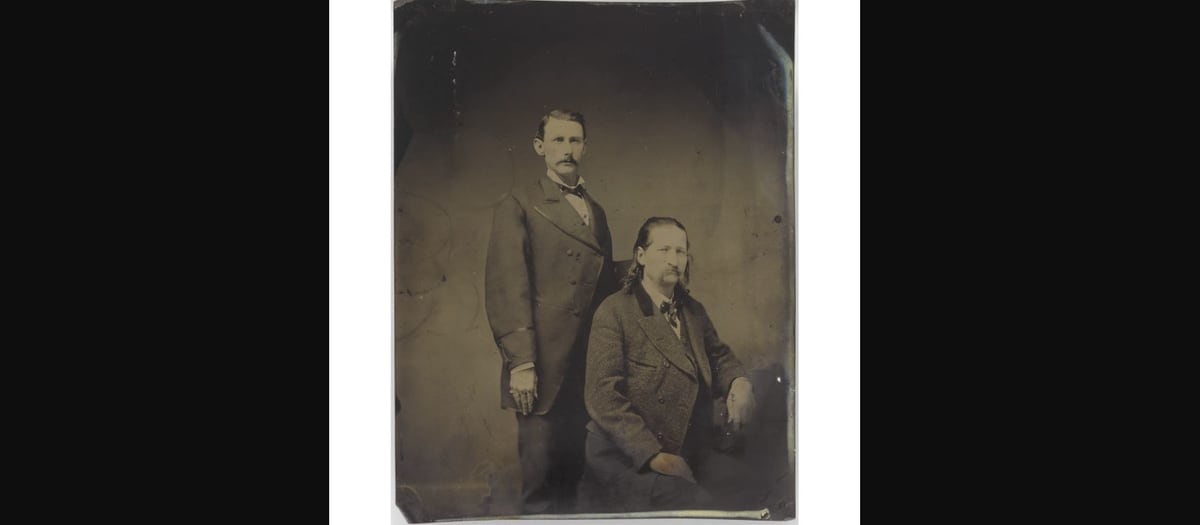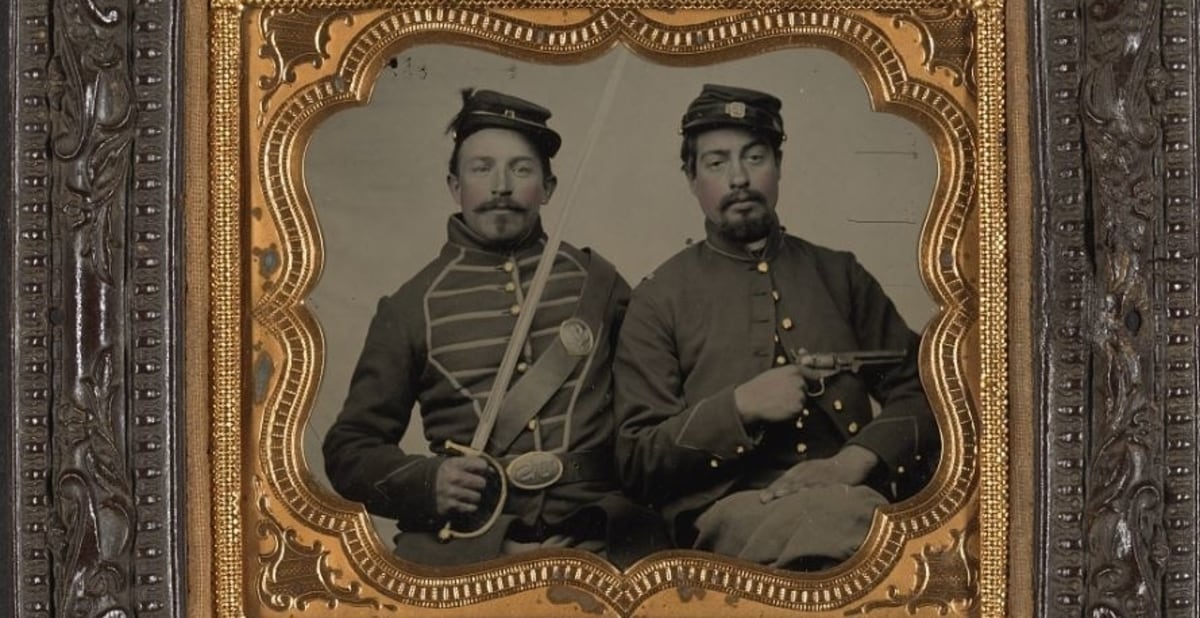Lawman and gambler Wild Bill Hickok carried two and was deadly accurate with both.
Confederate guerrilla leader William “Bloody Bill” Anderson carried at least three.
Saloon owner/gunman “Rowdy Joe” Lowe once kicked one from a sheriff’s hand, discharging the gun and wounding an innocent bystander.
The weapon that attracted these three Westerners and many others on the frontier was the Colt Navy, a revolver that was introduced in 1850 and remained in production more than three decades. Samuel Colt and his revolvers remain world famous, but for many people today the Colt name evokes images of the Single-Action Army, first issued in 1873 and immortalized as “the Peacemaker.”
That popular weapon owed its origin to the Colt Navy.
Designed to complement or supersede the .44-caliber Dragoon, which weighed more than 4 pounds unloaded, the new six-shot .36-caliber Navy weighed just 2 pounds, 10 ounces, with a 7.5- inch octagonal barrel.
Some believe Colt designated the revolver the “Navy” in reference to the naval scene engraved around the cylinder, which commemorates the 1843 Battle of Campeche between Texian and Mexican vessels. However, it was collectors and historians who later dubbed it the Navy Model of 1851.
Colt himself never used dates to define new weapons; factory records simply described it as the Navy or Belt Pistol. In 1861, when Colt introduced a round-barreled version, the original Navy then became the Old Model Navy.

From 1850 until the mid-1860s, Colt manufactured most of its revolvers from raw materials supplied by Thomas Firth & Sons of Sheffield, England, including the “silver steel” introduced in the late 1850s and used to make the Army Model of 1860 and later weapons.
The 1851 Navy soon found a ready market. Models exhibited at the Great Exhibition in London that year, alongside Dragoon and Pocket revolvers, were in such demand that Colt later established an armory in London, from which he supplied thousands of Navies to the British government for use in the 1853–56 Crimean War.
Back in the United States, Colt added a night shift at his Hartford, Connecticut, factory to meet domestic demand for his guns. While the Pocket models and mighty Dragoon remained popular, it was the Navy that captured the imagination of California gold-seekers, Western emigrants and those determined to settle on frontier lands rife with buffalo and/or hostile Indians.
By 1860 the .44- caliber New Model Army revolver soon rivaled the Navy on which it was based. Its frame and grip initially matched the Navy in size, but Colt later lengthened the grip to absorb recoil and modified the frame to accept the enlarged .44-caliber cylinder.
The factory also replaced the hinged loading lever with a “creeping lever” partly housed in the now-rounded barrel. In 1861 Colt based its updated Navy revolver on this design. Despite their popularity, however, the new Army and Navy models were structurally weaker than the original Navy and suffered more service breakages.
While most Union cavalry regiments used the new .44-caliber Army, some were armed with the Navy revolver. It also became a favorite of guerrilla bands on either side of the Civil War. Many carried spare loaded cylinders and extra Colts in their belts, giving them massive firepower when raiding or attacking.
While percussion, or cap and ball, weapons are accurate and generally reliable, they are somewhat tedious to load.
The shooter must set the weapon at half cock in order to revolve the cylinder. He then pours a measured amount of powder into each chamber, followed by a lead bullet; also available are prepared paper or foil cartridges, which include powder and ball. The shooter then rams the charge home using the hinged or creeping lever beneath the barrel. Finally, the shooter places small copper caps filled with fulminate of mercury over nipples at the rear of each chamber.
This takes considerable time, hence the need on the frontier for spare cylinders or additional weapons.
Another reason shooters carried at least two revolvers was the danger of misfire if the black powder got damp or the percussion caps failed to explode. A backup pistol could be a literal lifesaver.
The Navy revolver also proved popular with Civil War spies, wagon masters, guides and scouts, such as Union scout James Butler Hickok, who by war’s end had earned the moniker “Wild Bill” for his action against Rebels.

Through the middle and late 1860s, despite rivalry from the likes of Remington and, later, Smith & Wesson, the Old Model Navy remained popular on the frontier. Prior to the introduction of metallic cartridges, it was the chosen weapon among Texas cowboys and also favored by gunfighters in the cow towns.
Hickok’s skill with his pair of ivory-handled Navies is legion, but others, too, were credited with sometimes amazing feats of arms. Back in the 1850s both the British and American governments had tested the Navy’s power and accuracy. Its seven-groove rifling (with a right- or left-hand twist) made it accurate up to 200 yards (perhaps more, depending upon the marksman).
It was certainly deadly within 100 yards. Hickok proved this on July 21, 1865, in Springfield, Missouri, when he shot Davis K. Tutt through the heart at 75 yards. Tutt was standing sideways, dueling fashion, which made Hickok’s shot even more remarkable.
The Confederacy widely copied the original Navy, while its manufacture and sale in the British Empire spread its fame worldwide.
By the time Colt ceased production of the gun in the 1870s, it had churned out more than 215,000 Old Model Navies for the American market, plus another 40,000 for the British market. Colt rolled out another 38,000 of the round-barreled 1861 Navy before ceasing its production in the 1870s.
In recent years, gun manufacturers in Belgium, Italy and the United States have sold thousands of reproduction Navies, both octagonal and round-barreled versions. Colt itself produced a number in the early 1970s. Today, the Navies (original and reproduction) are in demand by shooters and collectors, who regard them as reliable weapons and much-loved relics of the Old West.
This article was originally published in the December 2009 issue of Wild West, a sister publication of Navy Times. To subscribe, click here.




